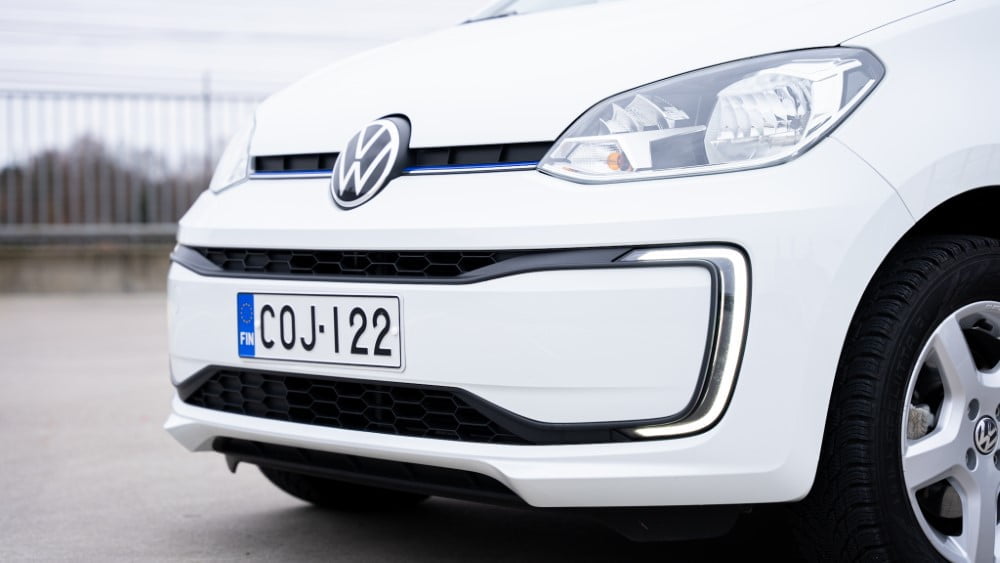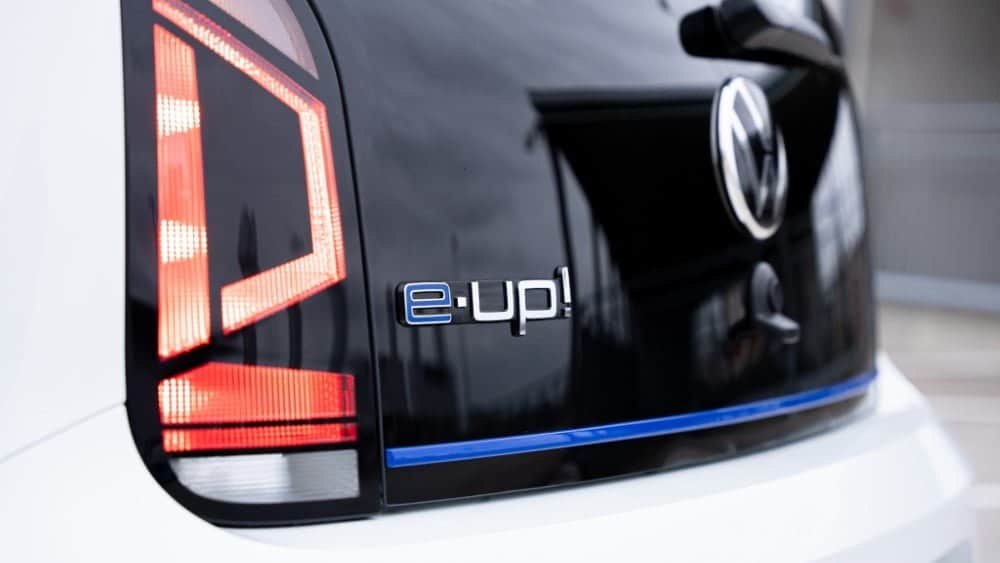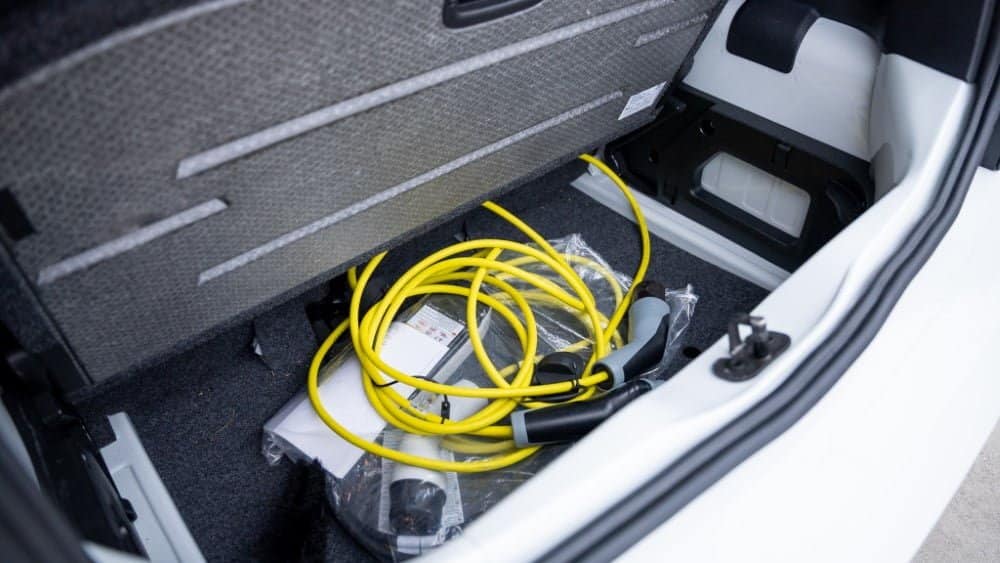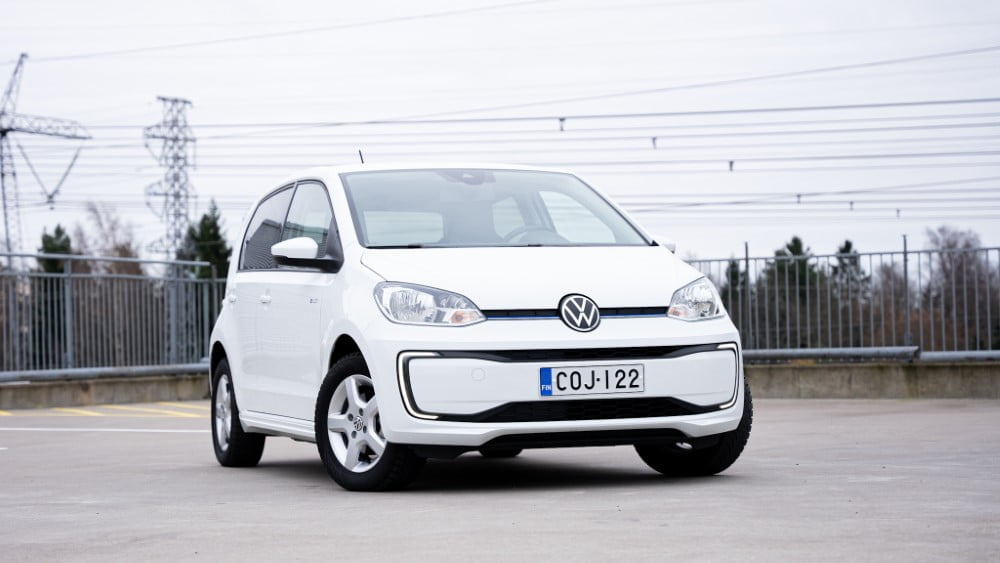The smallest model in the Volkswagen range, the e-up! is not exactly a newcomer, the first internal combustion engine up! was launched back in 2011, followed a few years later by the electric version e-up!.
The combustion engine up! is no longer available, but current trends suggest that the all-electric e-up! is holding its own, even as Volkswagen’s range moves forward with models such as the ID.3.
In terms of body style and appearance, the e-up! is little changed from the first models. The biggest and most important update in the latest 2020 model is in the capacity of the traction battery. Now the electric e-up! can travel up to 250 kilometres on a single charge!
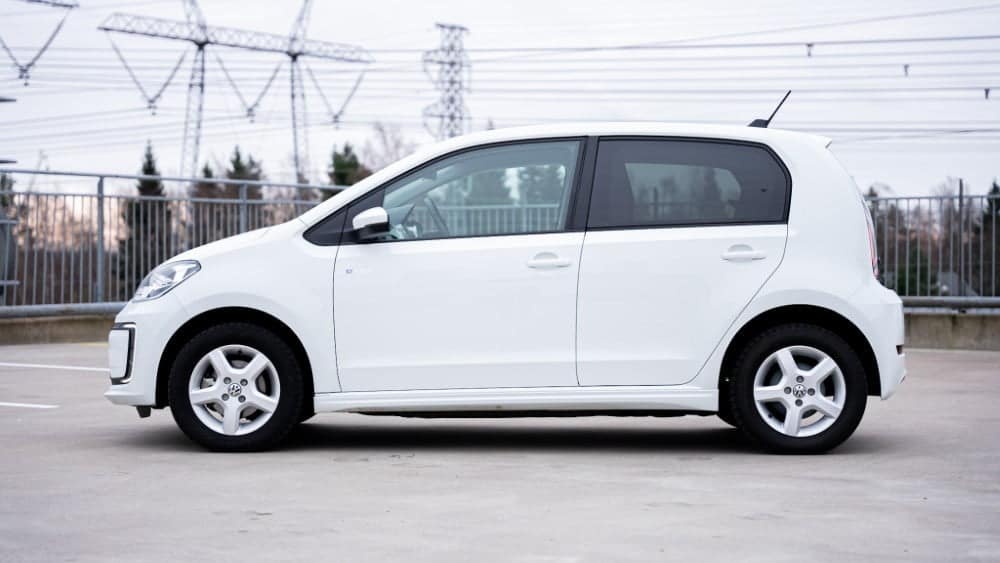
Antti E-28 is the first car in the city to be equipped with a battery
At just 3.6 metres in overall length, the e-up! is at its best in town and on shopping trips. With seating for four and a boot with 250 litres of space for shopping. Cables can be hidden under the floor of the boot, saving a considerable amount of boot space for other luggage.
The small e-up! is agile, with a u-turn of less than ten metres and a pleasantly light steering feel. The test drive had already been fitted with friction tyres, which clearly softens the ride. The electric motor produces a brisk 82 horsepower. Immediate power and 210 Nm of torque are available without delay, making city cruising a breeze.

Electricity consumption is significantly lower in city driving than on the road. Even in urban driving, however, consumption varies significantly depending on the driver’s driving style.
At best, during the test drive, we achieved 13-14 kWh/100km in the city with a very light throttle and without bad traffic jams. A heavier shopping trip or otherwise carefree throttling easily pushes electricity consumption closer to 20 kWh/100 km. Depending on the driving style, the range in the city therefore varies between just under 200 km and 250 km.
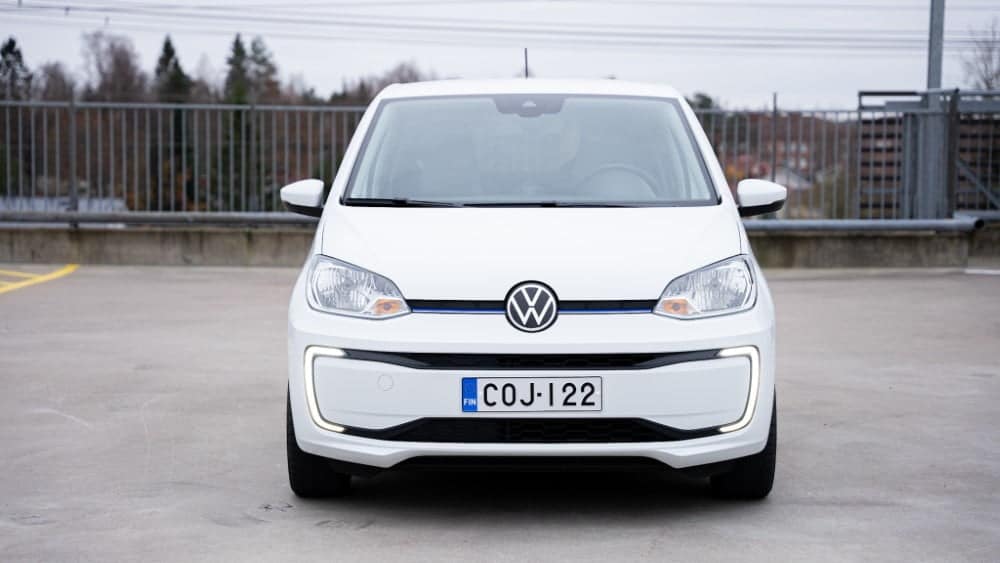
The road is also manageable
Despite its small size, driving on the road is not terrifying; on the contrary, the e-up! offers a pleasant ride, stable for a small car, and the noise level, at least on friction tyres, is nowhere near deafening.
The main problem seems to be keeping track of the somewhat inaccurate speedometer, to avoid any major speeding offences. The power and torque of the electric motor are also noticeable at higher speeds, and there seems to be a ‘power reserve’.
The main drawback with increasing speed is a sharp increase in electricity consumption. Even at 80 km/h, electricity consumption remains at a low level of 13-14 kWh/100 km. At 100 km/h, electricity consumption is around 15 kWh/100 km, but higher speeds start to eat up the battery more efficiently. At motorway speeds, the operating range on a full battery hovers around 200 km.
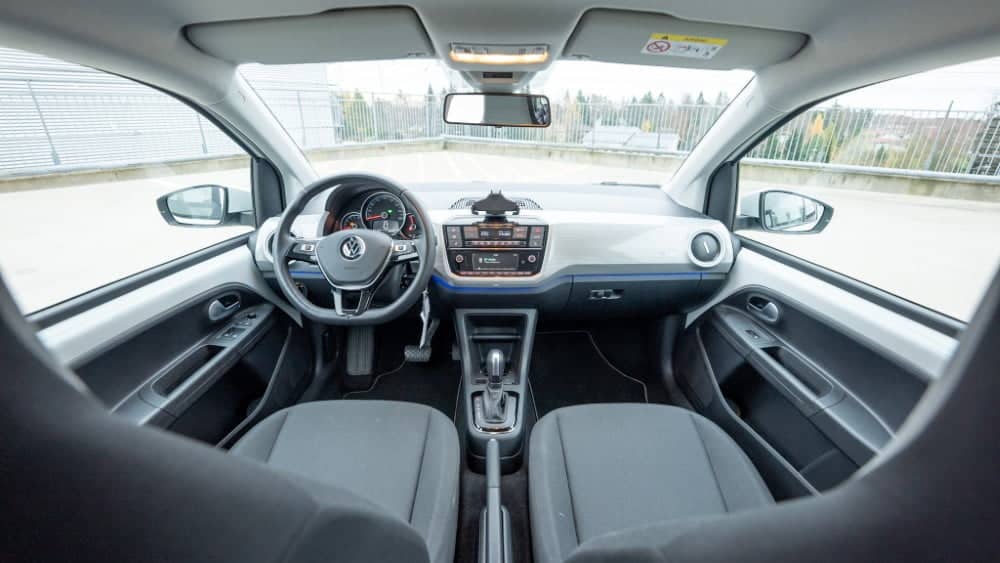
40 kW fast charging for efficient everyday use
the e-up! features a CCS fast-charging socket and can be charged from zero to 80 percent on a DC charger in up to an hour at its fastest. e-up! can receive a maximum charging current of 40 kW, which makes even more active use of the car smoother. A half-hour shopping trip can currently charge up to a hundred or so kilometres.
With AC charging, the car is charged in public places or at a home charging station at 7.2 kW, taking around five and a half hours to fully charge the battery. From a standard 230 V socket, it takes about 17 hours to fully charge the battery.
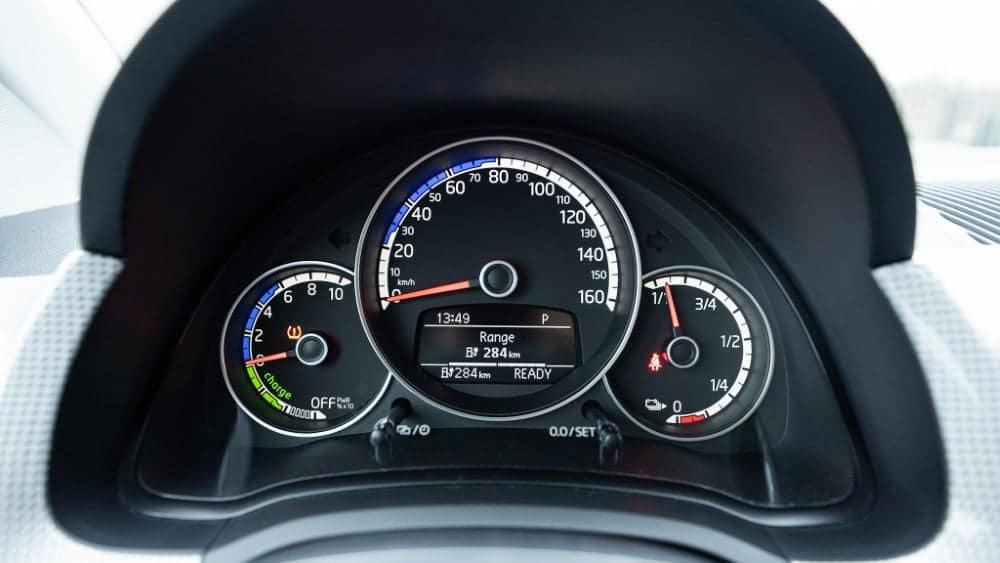
The interior provides the basic needs
For taller drivers, the longitudinal adjustment of the seat may run out of adjustment space. In the back seat, an adult may find the journey a little more knee-buckling. The car’s four-seat layout means that there’s plenty of room sideways in the back too.
the e-up!’s standard equipment includes some interesting features that cannot be taken for granted in a smaller car. The car always comes with a heated windscreen, lane-keep assist and automatic air conditioning.
There are three different equipment packages to choose from, the names of which already tell you a lot about the equipment included in the packages.
The Comfort package includes features such as automatic headlights and height-adjustable front seats.
The assistance package includes parking assistance, reversing camera and cruise control.
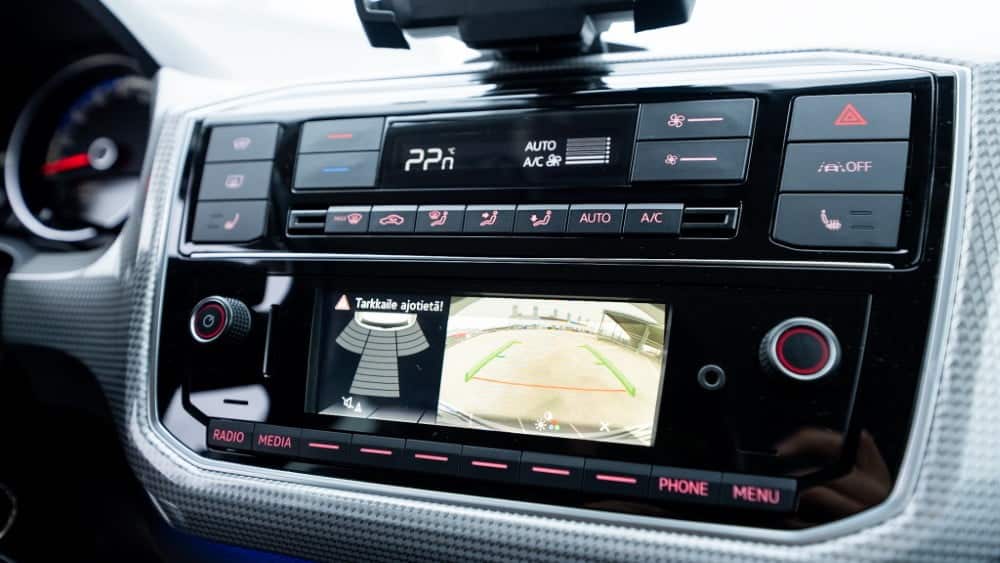
The winter package heats the front seats and exterior mirrors.
If the e-up! is the smallest model in the Volkswagen range, the materials can also be described as the most modest. A lot of hard plastic has been used and the quality of the materials cannot be compared to the more expensive models.
The radio has the basic functions and connectivity, but the dashboard is not luxurious in appearance – although the blue LED strip light at the bottom of the dashboard does brighten up the mood.
However, interior materials are of little importance in a car of this size. The key features of a fully electric car – range and power consumption – are well within the range, so you don’t have to worry about charging every trip with the e-up! Although you do have to pay a little more for the green shopping bag than you would for an internal combustion engine model.

Volkswagen e-up!
- Maximum power: 61 kW, 82 hp.
- Maximum total torque: 210 Nm.
- Battery capacity: 36.8 kWh (gross)
- Rated range on a single charge: 260 km.
- Test-driven range on a single charge: 240 km.
- Acceleration: 11.9 sec (0-100 km/h)
- Test drive consumption: 14-19 kWh/100km.
- Curb weight: 1235 kg.
- Drive mode: front-wheel drive
- Boot space: 250 l.
- Starting price: €23 535
